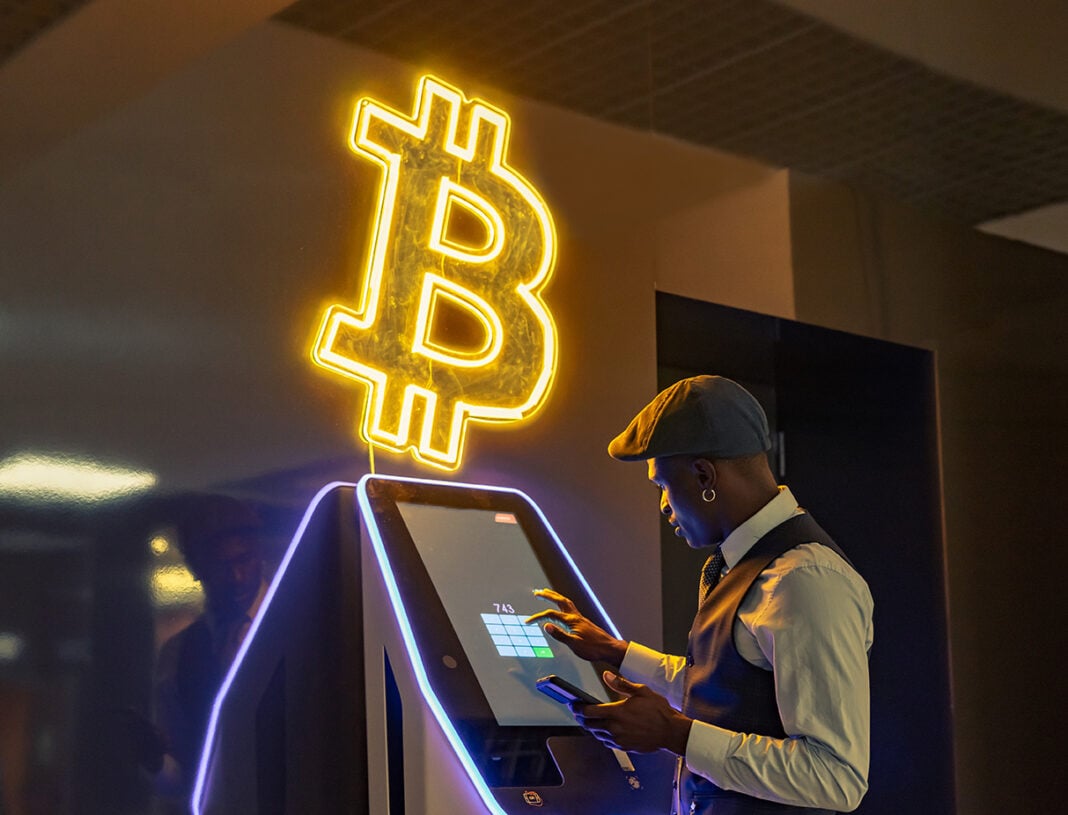Bitcoin ATMs have become a common sight in retail locations and public spaces across the United States, providing a bridge between traditional cash transactions and the digital cryptocurrency world. With over 38,500 Bitcoin ATMs installed worldwide as of December 2024, these machines offer newcomers to cryptocurrency a familiar and accessible entry point.
1. What Is a Bitcoin ATM, and How Does It Work?
A Bitcoin ATM is a specialized kiosk that allows users to buy or sell cryptocurrency using cash or debit cards, functioning similarly to traditional bank ATMs but connecting to cryptocurrency exchanges instead of bank accounts. These machines typically feature touchscreen interfaces that guide users through transactions step by step, with built-in QR code scanners to read cryptocurrency wallet addresses and identity verification systems to guarantee compliance with U.S. financial regulations. Most Bitcoin ATMs operate as either one-way machines (buy-only) or two-way machines (buy and sell), with the latter being more expensive but offering complete transaction flexibility. The machines connect to the internet to access real-time cryptocurrency prices and execute transactions on various blockchain networks.
2. How to Find a Bitcoin ATM Near You
Locating Bitcoin ATMs has become easier as the network expands across the country. Online mapping services and cryptocurrency wallet apps with built-in locators provide real-time information about nearby machines, including operating hours and supported cryptocurrencies. When searching for a Bitcoin ATM, prioritize safety by choosing machines in well-lit, high-traffic areas like grocery stores, shopping centers, or gas stations instead of isolated locations. Fee transparency should be the main consideration when choosing a Bitcoin ATM, as costs can vary between operators and locations.
3. Preparing to Use a Bitcoin ATM: What You Need
Before visiting a Bitcoin ATM, make sure you have a cryptocurrency wallet app installed on your smartphone, as you’ll need this to receive your purchased Bitcoin. Popular wallet options include Coinbase Wallet, Trust Wallet, or hardware wallets like Ledger, each offering different levels of security and user control. Your wallet will generate a unique QR code that the ATM will scan to send your purchased cryptocurrency. Bring valid government-issued identification, as Bitcoin ATMs require ID verification for compliance with Know Your Customer (KYC) and Anti-Money Laundering (AML) regulations. Requirements vary by transaction amount, with smaller purchases under $500 often requiring only phone number verification, while larger transactions may need driver’s license or passport scanning. Choose your payment method in advance, whether cash or debit card, and guarantee that you have sufficient funds plus fees.
4. Step-by-Step Guide to Using a Bitcoin ATM
The transaction process begins by choosing your desired cryptocurrency and transaction type (buy or sell) on the machine’s touchscreen interface. Enter your phone number for verification and wait for the SMS code to confirm your identity. For larger transactions, you may need to scan your government-issued ID using the machine’s built-in scanner. Next, specify the amount you want to purchase, either in dollar terms or Bitcoin quantity, and review the exchange rate and total fees before proceeding. Scan your wallet’s QR code using the machine’s scanner to designate where your Bitcoin should be sent. Insert your cash bills one at a time into the machine’s bill acceptor, or insert your debit card and enter your PIN if using card payment. The machine will process your transaction and provide a printed receipt containing transaction details and confirmation information.
5. Fees, Limits, and Safety Tips When Using Bitcoin ATMs
Bitcoin ATM fees typically range from 15% to 30% for purchases, higher than online exchange rates due to the convenience and operational costs of physical machines. These fees cover regulatory compliance, cash handling, maintenance, and the convenience of instant transactions. Daily transaction limits vary by operator and verification level, commonly ranging from $500 for basic verification to $20,000 for fully verified accounts.
Safety considerations include verifying the ATM’s legitimacy by checking for proper licensing information displayed on the machine and making sure the location appears professional and well-maintained. Protect your personal information by being aware of your surroundings during transactions and never sharing your wallet’s private keys or recovery phrases with anyone. Keep your transaction receipts for tax record purposes, as cryptocurrency purchases are taxable events in the United States.






